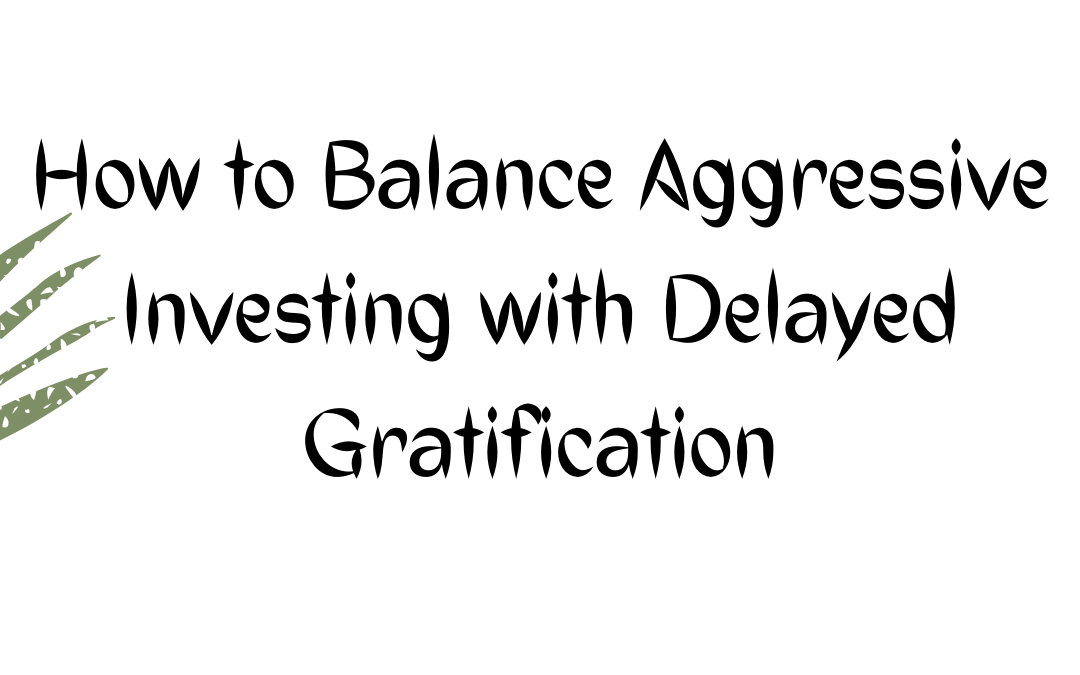The financial markets are arguably exciting and boring at the same time. Let us forego the exciting side of the financial markets for a moment. We often do not like boring things or people. What if you found out that there is more money in the boredom than the exciting side of investing? Investors often have the urge to gain more from the initial capital they put in an investment. This is the same in financial markets. When seeking alpha to beat the markets, aggressive investors end up underperforming and sometimes in great losses. Where then do we draw the line between aggressive investing and delayed Gratification?
Delayed gratification is a construct that allows an investor to be patient and forward-looking in their investments. It calls for passive investing and applying moderate to low levels of risk, which is boring, a perfect world would be monotonous because of doing the same thing over and again. Most seasoned and experienced investors are passive players, unlike most novice traders that want a quick return at the expense of what they do not know. What every investor ought to know and prioritize is the safety of their principal. Chasing yields should have a cap to it. Therefore, a balanced asset allocation methodology is crucial towards forming a solid base of wealth building. Critics of aggressive traders hold that however much risk the investors take, they often will be invested in an index fund that offers them a stable and less risky avenue for returns.

You will observe that across different risky financial assets, most investors tend to be young adults. Young adults are inclined towards taking on more risk than their older counterparts, this is because their consequences are less far-reaching compared to an older adult’s case. Noteworthy, aggressive investing especially for the short term attracts higher transaction costs and eats into profit margins. If one has chosen to be an aggressive trader, they should ensure they have an equally strong mindset and stamina to withstand large drawdowns. For it is in these drawdowns that aggressive traders make profits from. For instance, a trader might execute his or her trade based on their trading rules but the market decides to have spikes that increase the position’s drawdown. An aggressive trader who understands their trade, will sit through the drawdown and watch the market turn in their direction. This takes more than a mindset; skills are a part of it. Unfortunately, however much aggressive and active investors try to beat the market, more than 90% end up underperforming.
Cognitively, passive investing with a buy-and-hold approach tends to trail the market and offer consistent returns. Passive investors enjoy deferment of costs such as capital gains tax. This translates to more money saved and made. It provides more money that can be reinvested without the hustle and bustle involved with active or aggressive investing that involves frequent analysis of stocks. Passive investing teaches us the importance of delayed gratification. You start small with the grit and patience to see your portfolio compound returns over the years. The Vice-Chairman of Berkshire Hathaway, Charlie Munger, opines that “great investing is dependent on a lot of delayed gratification”. Self-control, and resisting the urge of instant gratification will have an investor check their aggressive self, optimize it with passive investing, and set themselves up for maximal consistent returns possible into the future. For instance, an asset allocation could be balanced with 60% equities, 30% Fixed income, and 10% Commodities. The equities are risky but will be optimized with the safer bonds and commodities. Warren’s rule of 10, 10, 10, helps investors assess their decisions in the market and is a great addition to one’s investing and general life decision checklist. The rule looks into how an individual will feel after deciding. How will you feel 10 minutes, 10 months, and 10 years after deciding? The balancing and consolidation of thoughts in the decision process are quite iconic, try it and track your performance over time. This will aptly help you balance your aggressive self with delayed gratification moves.
Fredrick Munyao
Related posts
Market Hacks
A look into Coinbase, What you Should Know
Cryptocurrency exchange platforms have offered crypto enthusiasts and investors reliable avenues that continue to increase in their popularity and reach….
Dogecoin, a hyped market sentiment?
The Crypto world keeps presenting new twists and turns into the investment space. Bitcoin experienced its soar, so did Ether….
What is a Trader Checklist? Here are Five Things.
Trading is one lucrative skillset that has the ability to generate short term returns that can be effectively deployed elsewhere…
How to Fight Inflation, The Use of Interest Rates.
Inflation is a word often pronounced in economic and financial circles. It has both positive and negative effects to a…
What is a Sovereign Wealth Fund? Here are the Top 5 Largest Sovereign Wealth Funds in the World.
A sovereign wealth fund is a pool of funds owned by an individual government that aims to invest partly or…







